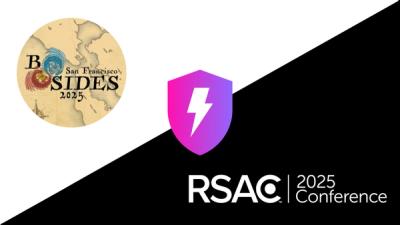
Security News
NVD Concedes Inability to Keep Pace with Surging CVE Disclosures in 2025
Security experts warn that recent classification changes obscure the true scope of the NVD backlog as CVE volume hits all-time highs.
@aw-labs/appwrite-console
Advanced tools
Appwrite is an open-source self-hosted backend server that abstract and simplify complex and repetitive development tasks behind a very simple REST API
This SDK is compatible with Appwrite server version latest. For older versions, please check previous releases.
Appwrite is an open-source backend as a service server that abstract and simplify complex and repetitive development tasks behind a very simple to use REST API. Appwrite aims to help you develop your apps faster and in a more secure way. Use the Console SDK to integrate your app with the Appwrite server to easily start interacting with all of Appwrite backend APIs and tools. For full API documentation and tutorials go to https://appwrite.io/docs

To install via NPM:
npm install appwrite --save
If you're using a bundler (like Rollup or webpack), you can import the Appwrite module when you need it:
import { Client, Account } from "appwrite";
To install with a CDN (content delivery network) add the following scripts to the bottom of your tag, but before you use any Appwrite services:
<script src="https://cdn.jsdelivr.net/npm/appwrite@7.1.0"></script>
For you to init your SDK and interact with Appwrite services you need to add a web platform to your project. To add a new platform, go to your Appwrite console, choose the project you created in the step before and click the 'Add Platform' button.
From the options, choose to add a Web platform and add your client app hostname. By adding your hostname to your project platform you are allowing cross-domain communication between your project and the Appwrite API.
Initialize your SDK with your Appwrite server API endpoint and project ID which can be found in your project settings page.
// Init your Web SDK
const client = new Client();
client
.setEndpoint('http://localhost/v1') // Your Appwrite Endpoint
.setProject('455x34dfkj') // Your project ID
;
Once your SDK object is set, access any of the Appwrite services and choose any request to send. Full documentation for any service method you would like to use can be found in your SDK documentation or in the API References section.
const account = new Account(client);
// Register User
account.create(ID.unique(), 'me@example.com', 'password', 'Jane Doe')
.then(function (response) {
console.log(response);
}, function (error) {
console.log(error);
});
// Init your Web SDK
const client = new Client();
client
.setEndpoint('http://localhost/v1') // Your Appwrite Endpoint
.setProject('455x34dfkj')
;
const account = new Account(client);
// Register User
account.create(ID.unique(), 'me@example.com', 'password', 'Jane Doe')
.then(function (response) {
console.log(response);
}, function (error) {
console.log(error);
});
You can use the following resources to learn more and get help
This library is auto-generated by Appwrite custom SDK Generator. To learn more about how you can help us improve this SDK, please check the contribution guide before sending a pull-request.
Please see the BSD-3-Clause license file for more information.
FAQs
Appwrite is an open-source self-hosted backend server that abstract and simplify complex and repetitive development tasks behind a very simple REST API
The npm package @aw-labs/appwrite-console receives a total of 40 weekly downloads. As such, @aw-labs/appwrite-console popularity was classified as not popular.
We found that @aw-labs/appwrite-console demonstrated a not healthy version release cadence and project activity because the last version was released a year ago. It has 3 open source maintainers collaborating on the project.
Did you know?

Socket for GitHub automatically highlights issues in each pull request and monitors the health of all your open source dependencies. Discover the contents of your packages and block harmful activity before you install or update your dependencies.

Security News
Security experts warn that recent classification changes obscure the true scope of the NVD backlog as CVE volume hits all-time highs.

Security Fundamentals
Attackers use obfuscation to hide malware in open source packages. Learn how to spot these techniques across npm, PyPI, Maven, and more.

Security News
Join Socket for exclusive networking events, rooftop gatherings, and one-on-one meetings during BSidesSF and RSA 2025 in San Francisco.